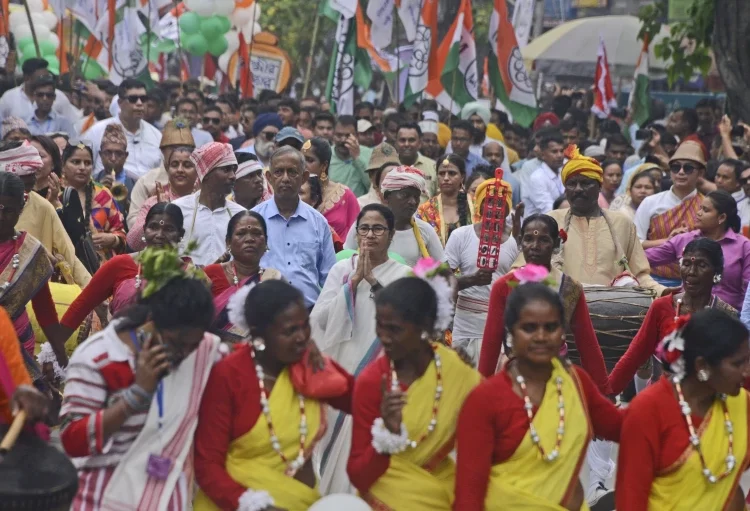NEW DELHI — Every five years, the world’s most populous democracy holds a giant election for millions of Indians to cast their vote on a new parliament.
And it does so in its usual flamboyance — with a spectacle of dance, drumbeats and firecrackers echoing across India as candidates march in processions to canvass for votes.
Colorful convoys of motorbikes, jeeps and autorickshaws have been navigating narrow streets in cities and towns as people line up to glimpse the contestants.
The six-week national election will start Friday with polling scheduled in 21 states in the first phase.
From April 19 to June 1, nearly 970 million Indians — or over 10% of the global population — are eligible to vote to elect a total of 543 lawmakers in the lower house of parliament.
Among the states voting on Friday is southern Tamil Nadu, where mega cardboard cutouts of political leaders are a common sight during the election season.
Indian Prime Minister Narendra Modi’s Bharatiya Janata Party has been trying to make inroads in the state where regional parties have dominated for decades. Among the issues dominating the campaign are the rising cost of living, corruption, federalism and minority rights.
The ruling Dravida Munnetra Kazhagam party is hoping to retain its influence. In the 2019 elections, DMK won 38 out of 39 parliamentary seats in Tamil Nadu.
DMK President and Tamil Nadu Chief Minister M.K. Stalin has been campaigning for his party, which is part of the opposition INDIA alliance aiming to unseat Modi and to weaken his government’s increasingly powerful sway. The acronym INDIA, which stands for Indian National Developmental Inclusive Alliance, includes the main opposition Congress party.
Priyanka Gandhi Vadra, daughter of Congress party leader Sonia Gandhi, has been campaigning in eastern Assam state where some districts will go to the polls in the first phase.






Discussion about this post